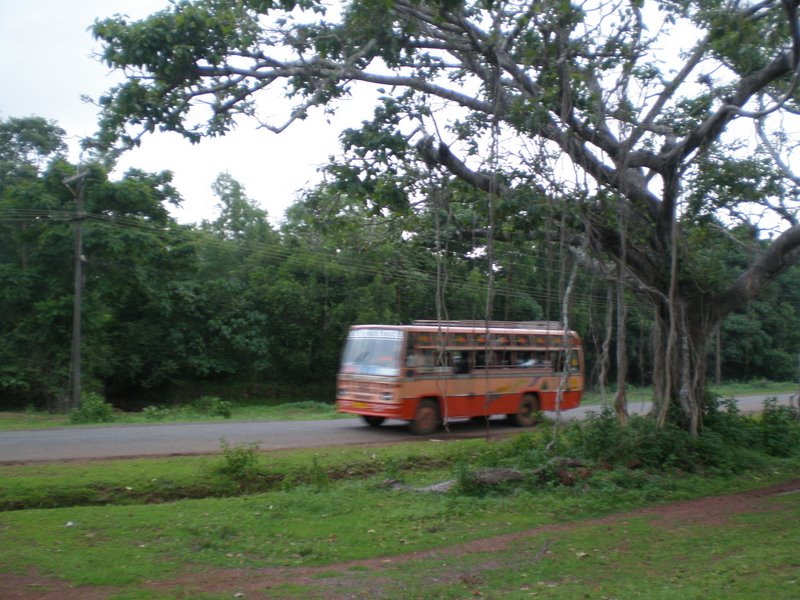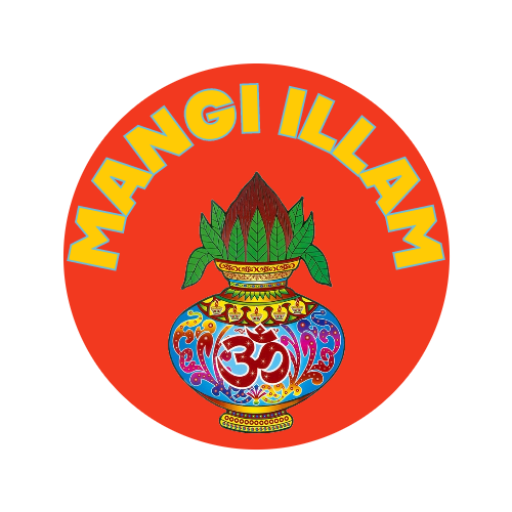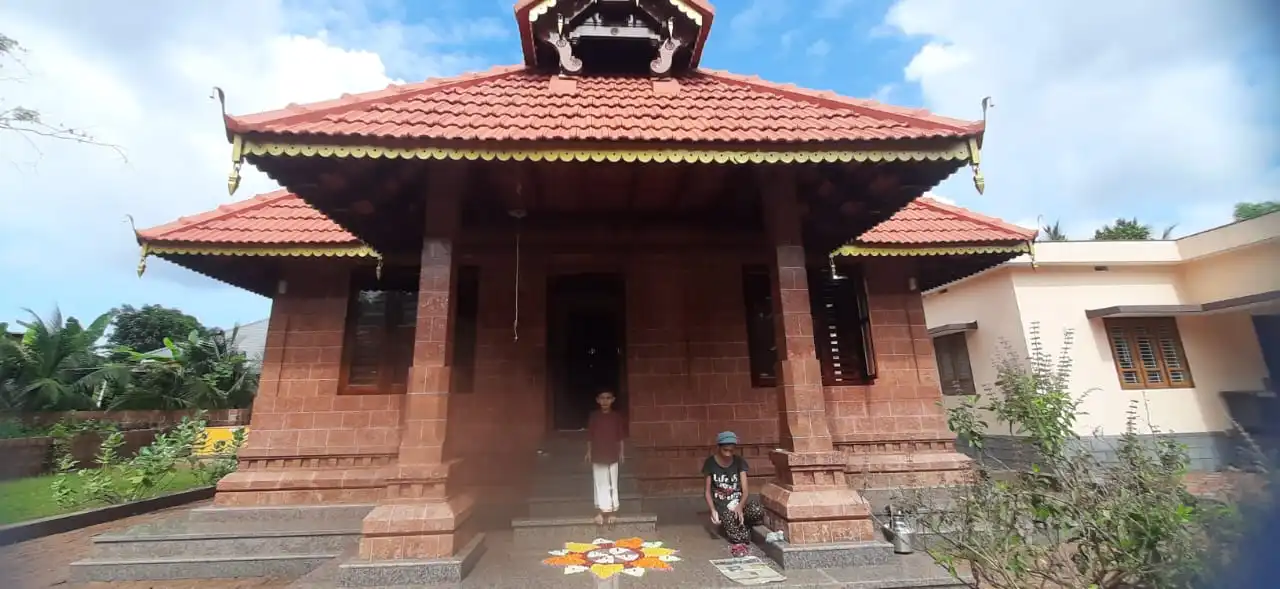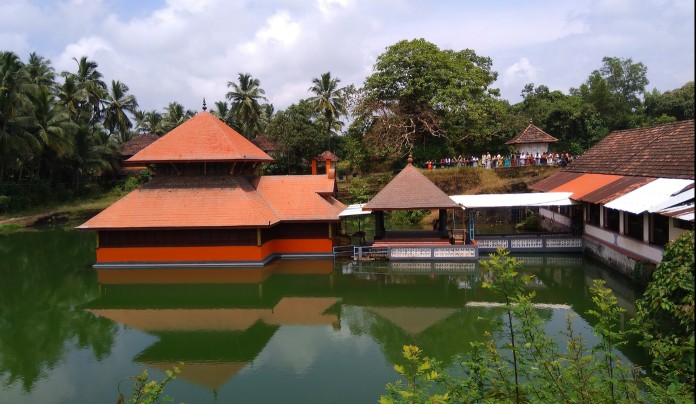
Saliya
About Saliya, MANGI ILLAM Tharavad and Korathi Amma
Saliya (or Chaliyan or Sali or Sale or Shettigar or Chettiyar or Devanga) is a Malayali caste. Their traditional occupation was that of weaving and they are found mostly in the regions of northern Kerala and southern coastal Karnataka, India.
Origins
Malayali weavers are generally believed to be descendants of Tamil/Telugu/Kannada weavers migrating at various points of history. Therefore, the origins of Malayali weavers is closely connected to weavers of Karnataka, Andhra Pradesh and Tamil Nadu. However, Sali or Chaliyan weavers have completely adopted Malayali traditions over time (except for later migrants like Saliyar of Balaramapuram). Since the origin of Chaliyans is so intricately connected to other South Indian weavers a brief description of South Indian weavers is given in this article.
Weavers in South Indian society
Various communities
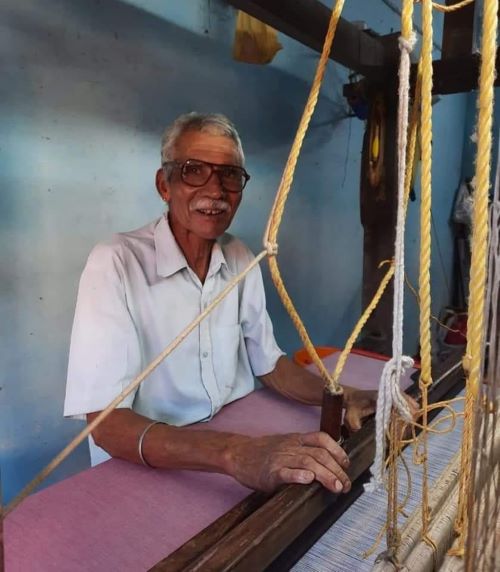
The communities or castes of South India have diverse origins owing to various migrations and the later consolidation under a single identity. All weaver castes in Kerala have either Tamil/Telugu or Kannada origins.The Malayali collective identity for weavers in Kerala is Chaliyan. This may show that majority of Malayali weavers belong to Padmashali or Sale or Sali community of South India.
The main weavers’ castes of South India are Padmashali, Devanga and Kaikkolar. Among these, the first two appear from the evidence of inscriptions to be native to Kannada and Telugu speaking regions. However, the Kaikkolar community is native to Tamil speaking regions. The earliest mention of Kaikkolar as weavers comes in a 8th century Jain lexicon, but weavers known as Kolika (a Prakrit word for weavers; Sanskrit: Kaulika) had their guilds during Satavahana period in Andhra region.
Names such as Jeda(Kannada: spider or weaver), Jada, Sedan(Tamil) and Chetan(Malayalam) appear in various sources. A 12th century Saivite poet Jedara Dasimayya was a weaver, with caste identifier jeda attached in his name. In Karnataka there are nearly 29 Kulavruthi weavers and in those devanga and padmashali, kuruvina shetty and other castes are there. The change in caste name can be understood from anthropologist Vijaya Ramaswamy’s research work on South Indian weavers.
Caste exultation
According to Ramaswamy, as part of the Virasaiva movement weavers championed caste negation initially. However, as time passed even that movement became caste ridden and various communities started claiming ritual superiority vis-a-vis other communities part of the same religion and also against non-Virasaiva communities like Brahmins. As caste negation gave way to caste exultation even weavers tried to obtain higher caste credentials and privileges. In the year 1231, at Chintamani (in present day Karnataka region with a mixed Kannada/Telugu population) it is said that the king granted privileges like right to the yajnopavita (the sacred thread worn by Brahmins), right to ride a palanquin, right to one’s own flag and symbol etc… to Devanga weavers. Many of these privileges were later granted to Padmashali weavers too. In Karnataka, this caste exultation gave rise to myth of brahmin or supra-brahmin origin so described in the Devanga Purana. Ironically, Jedara Dasimayya, who was part of the Virasaiva movement that exhorted caste negation, was re-christened as Devara Dasimayya to indicate the new status of Jeda weavers.
Weaver migrations
If Kaikkolars of Tamil region do not have any relationship with Kolika weavers of Andhra region then Sale weavers of Andhra are the first ones to migrate Tamil region during Chola period around 10th century. They were known as Choliya Saliyars. From inscriptional evidences Kaikkolars mostly worked as soldiers around that time. During Vijayanagara period Devanga weavers migrated to Tamil region(to Kongu region).But considering the fact that Sedan and Chetan communities were still observed in Tamil and Malayala regions respectively there might have been many Jeda migratons to this region before Devanga identity. These Sali, Devanga, Kaikkolar, Jedas who migrated from Tamil region make up the Malayali weavers.
Religious sphere
The weavers of South India came under the influence of religious movements such as Saiva and Vaisnava in the last millennium. As a result of this, region-specific traditions could be found among the weavers with a common root. Devanga weavers in Karnataka/Andhra/Tamil Nadu are primarily goddess worshippers, but Devangas who joined Lingayatism are primarily Shiva worshippers.Sali in Andhra and Karnataka worship Shiva or Veerabhadra as their main deity. Sali or in Tamil Nadu worship Vinayaka as their main deity. Padmasali in Andhra, Mumbai, Tamil Nadu and in Karnataka worship Shiva in the form of Markandeshwara, Venkateshwarasamy and Padmavathi.Also, many Padmashali worship other avatars of Vishnu, such as Laxminarasimha and Cheluvarayaswamy.
In Kerala, Salis belonging to the Balanga (Right Hand caste) division worship Vinayaka as their main deity whereas those of the Edanga (Left hand caste) are primarily goddess worshippers.
Edanga and Valanga Saliyas
The right hand (Balanga) and left hand (Edanga) divisions are unique to South India and mostly observed in Tamil and Telugu regions in the past. There is no clear cut definition for these divisions. These divisions mostly determined ritual privileges with right hand castes generally clamining higher position over left hand castes. And there were incidences of Edangas upgrading themselves to Balangas.
According to Ramaswamy, Sali weavers were always part of right hand castes while Devanga and Kaikkolar were part of left hand castes. But in Kerala, Sali or Chaliyans themselves divided into both right hand and left hand castes.
Saliya Teru
The settlements of Saliya community in Tamil Nadu and Kerala are called Terus (literally, street). The Teru culture of Chaliyans in Kerala was a defining reason for anthropologists to trace these weaver migration from Tamil regions, where the Saliyar exhibit similar culture, to Kerala. In Kerala, both Edanga and Balanga divisions of Chaliyan followed this settlement traditions.
The Etymology of Saliya
As of now, there is no unanimity in the etymology of Sale. Both Indic and Dravidian constructions could be found. The common derivations in the literature is from Sanskrit word Jalika meaning spider or weaver or Prakrit/Tadbhava word Saliga meaning the same.
Chaliyan
As mentioned above Malayali weavers were called Chaliyan and were divided into right hand (Valanga) caste and left hand caste (Edanga) groups.
Edanga Saliyas
Edanga Saliyas are spread from northern Kannur to Mangalore. Traditional accounts identify fourteen settlements of this community from Pattuvam in Kannur to Panambur in Mangalore.
Folklores and Migrations
From the Edanga Saliya folklores, it was generally believed that initially these weavers were working for Zamorin royal family in Kozhikode. Later they moved north and took refuge with Kolathiris in Kannur. There were further migrations to north and by 17-18th century there were Saliya settlements in Mangalore.
The Saliya migrations need not be in a mass scale. Individual families would migrate and take refuge with local chieftains or with rich families. When the numbers of Saliya families increase in a particular area they would then form their own settlements which were called Teru. The region encompassing a Teru and a main community temple was called Nagara. The list of 22 Edanga Saliya Teru or Nagara is given below.
Pattuvam-Adutila-Talipparamb-Manjnad-Kunjnimangalam-Payyannur-Vellur Puthiya Teru-Vellur Pazheya Teru-Karivellur-Pukkod-Nileshwaram-Kanjnagad(Kizhachheri)-Adiyal-Odottambalam (Padinjnare Teru)-Vellikunnu (Kilakke Teru)-Keezhur Theru (Kasargod)-Kudunkuli (Varikkulam)-Kanjnarod-Poyilnagaram ( Kadagam Chandanadkam)- Kumbhyam(Narayana Mangalam)- Mangalpadi-Panambur-Kannancheri(Kannancheri Theru) The lineage system of Edanga Saliya is called illam(house). These are exogamous septs. This lineage system is similar to that practiced by non-brahmin Tuluvas. The Saliyan’s in Tamil Nadu too have these exogamous septs also known as vidu(house) but they have also acquired gotras in addition to vidus. This situation is also observed among Telugu Sali weavers too. A Kasargod saree is a type of traditional cotton saree made by the weaver’s belonging to Saliya community in the Kasargod district of Kerala. They are handmade, easy to wear, soft light weight and durable . They are distinct from the traditional Kerala saree and exhibit influences of neighboring karavali styles.
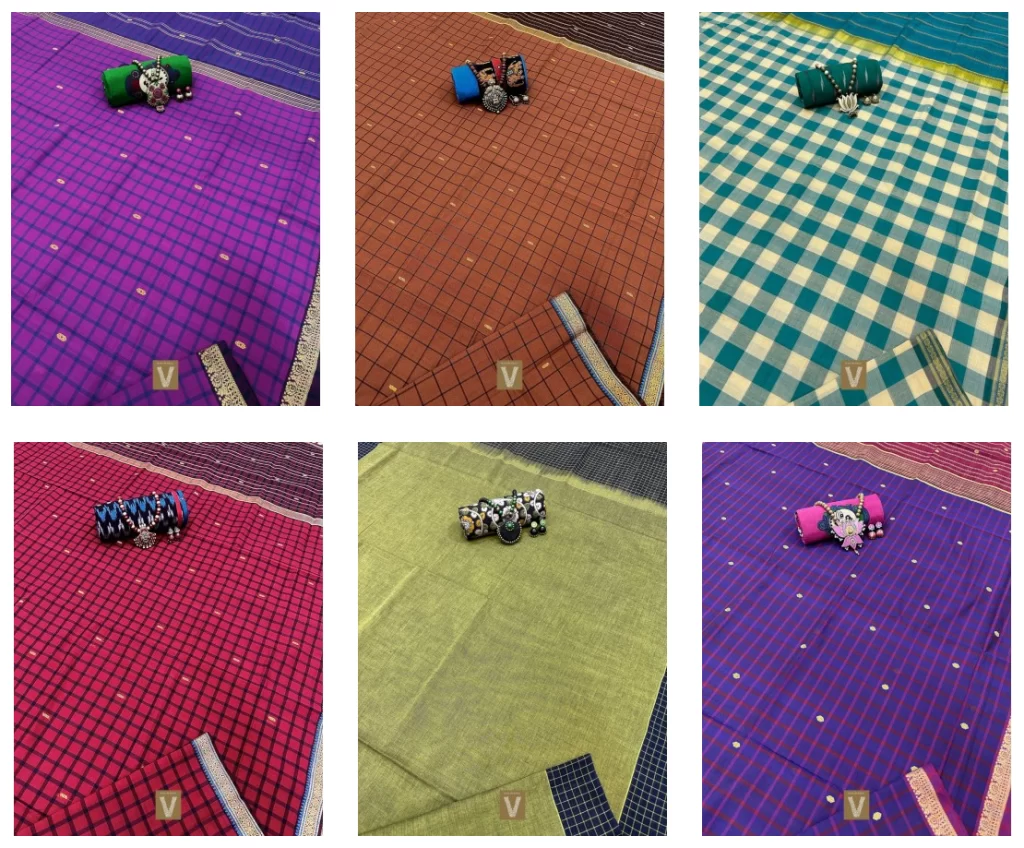
The illams of Edanga Saliyas are
1. Mangi
2. Kongnani (Konkani)
3. Badiyari (Vadiyari)
4. Tarurutti
5. Anjari
6. Choyiyandi
7. Moranda
8. Kekadth
9. Jnandari
10. Kottarath
11. Narpachhan
12. Torappanmari
13. Chovvari
14. Chatanjnat
15. Naramban
16. Koovakkad
17. Pudukudi
18. Erpachhi
19. Balanga Saliyas
Balanga Saliyas are mostly found in Malabar. In the past they made a disjointed distribution with Edanga Saliyas.
Saliya among Sale
Malayali Saliyas for most of the cultural aspects, including the language, follow local traditions. However, there are parallels with the Tamil Saliyar in at least three aspects.
1. Teru culture
2. Right hand caste
3. Vinayaka as the main deity
All these aspects apply to Balanga Saliyas only. Edanga Saliyas have only Teru culture but unlike Sale caste in South India they belong to left hand caste division and worship goddess.
Among weavers of South India Devanga and Kaikkolar were part of left hand castes. But only in Telugu and Tamil regions. And till today Devangas are primarily goddess worshippers.
These facts probably show different origins of Edanga and Balanga Saliyas. The Edanga Saliya community officially identifies itself as Devanga in Karnataka. Many Saliyas in Kerala now call themselves Padmashaliya, a name taken from Padmashalis of Telugu region.
Saliya association with other Malayali castes
According to Malayali caste system, Saliyas were part of 18 Malayali castes who were collectively known as Nairs. The Saliya men were part of Nair pada(Nair brigade)s and would actively participate in battles/wars in old days. In South Malabar they even adopted surname Nair. The present-day caste composition of Nair and Tiyyar may not represent the old day identities. The consolidation of these two castes was largely a result of various movements in 19th and 20th century. At present, most of Saliyas consider themselves as an independent caste though few families still officially invite marriage proposals either from Nair or from Tiyyar castes.
In Kannur, Ashtamachal Bhagavathy temple part of Payyannur Teru has a unique tradition of a festival called Meenamrithu which is related to sea trading culture of the past. It was believed to have belonged to a merchant community called Valanjiyar belonging to left-hand caste group in the past. However, now Saliyas conduct this ritual. But relationship between Valanjiyar and Saliya communities at present is still a speculation.
Duarte Barbosa, who visited Malabar during 1505 states that the position of Chaliyar in caste hierarchy is lower than the Nambuthiris, Nairs, Vyapari (Ravari or merchants), Kushavan (Anthuran) and Mannan. They rank higher than the Thiyya, Mukkavar.etc. Similar to the intermediate castes like Kushavan and Mannan, Chaliyan women used to marry martial Nair men as per the custom of morganatic marriage which was prevalent in Malabar. Physical relationships with any one ranking lower than a Nair usually resulted in violence. The Chaliyan men either married women from their own caste or castes further down. Since they are related by blood to the martial Nairs, Chaliyans were permitted to carry arms in public and were recruited in large numbers to local militias.
Native religious traditions
Many artisan castes in South India have their own temples and priests. The Saliya temples are dedicated to goddess Bhagavathi. The temples, generally known as Sthana, have four priests officiating various ceremonies.
1. Madeya : He is responsible for ritualistic worship of goddess Bhagavathi.
2. Karanavar : He is the point man of the community.
3. Komaram : Through him goddess talks to the people.
4. Belicchappad : Similar to Komaram, an oracle.
Bhagavathi
The Malabar region was predominantly spirit worshipping for greater part of history. However, the most common goddess Bhagavathi is not considered as a spirit. Saliyas generally worshipped Korati as the spirit goddess in their Tharavadus. Unlike Bhagavathi, Korati was not worshipped in idol format but in symbol format. People believe in Korati is part of Bhagavathi.
Spirits
The main spirits are: Korathi, Nāga, Guliga, Kallurti and other animals, folk heroes, Hindu mythical heroes etc. The spirits are considered “low” in worships. Their position is not equal to Hindu gods but are equated with Shiva’s Ganas or bodyguards. The shrines for spirits are built outside the front wall of temple housing the goddess Bhagavathi.

Influence of Caste System
In the caste Kerala society every independent religious worship was brought under Brahmin authority. As a result only Koil Thampuran(a Namboothiri ruler) could nominate the Karanavar. It was compulsory to have the temple purified by a Brahmin priest after its construction. Also, only a Brahmin priest was allowed to conduct major rituals and community priest could officiate only minor ceremonies.
Cultural Aaspects
Culturally, Saliyas follow unique traditions of Kerala and Tulu Nadu.
Marumakkatayam or Aliya Kattu
Tuluvas and Malayali Saliyas believe Aliya Kattu and that was adapted at the behest of a king called Bhootala Pandya. The story goes like this. A demon wanted the king to sacrifice his son. However, none of his queens and sons were ready to be sacrificed. Seeing the difficult situation, king’s sister offers her son. However, the demon shows mercy and lets him off. On his part, the king declares his nephew as his true inheritor.
The community was matrilineal and followed matrilineal inheritance of property and lineages. The matrilineal lineage is called illam in Malayalam or bari in Tulu. The Tharavadus were identified with illam names (some other castes had unique Tharavadu names which also became their family names).
As a result of this system women had property rights. They were free divorce and re-marry. However, there were few cultural differences within the community between families that lived in the Tulu region and that lived in the Malayala region. There were rules for divorce and widow re-marriage in Tulu regions and community elders had a say in those matters. However, Malayala region had relatively liberal environment. The maternal uncle, known as Karanavan or Karnon, was the male head of the family.
Every Tharavadu had a Korati shrine. Only female head of the family was allowed to offer prayers. The male members of the family and females of other Tharavadus were barred from entering the shrine.

Customs
A kind of pseudo-marriage or Pandal Kalyanam ( Chappara Maduve in Kannada) was conducted for a girl of the age of ten or eleven. For boys there would be a coming of age ceremonies at sixteen at their thana or tharavad. In old days weddings were very simple. A present of pudava, a cloth, to the girl would complete the marriage ceremony. There were no records of polygamy (by both sexes) but “serial monogamy” was very common. There was no tradition of taali(tying the knot) in the traditional Malayali weddings. In twentieth century thali made its appearance in Kerala society. In the initial days it was the responsibility of bride’s parents to bring the thali. However, nowadays that responsibility has moved to grooms’ side. Also, in the region of Tulu Nadu, generally, Brahmin priests officiate the wedding ceremony whereas, in Kerala, weddings are still performed by community elders.
The caste position until the dawn of 20th century
Saliyas were one of the occupational groups part of temple centered Naduvazhis in Malabar, Kerala. The Naduvazhi based caste system came into existence during medieval times. The purity-pollution rules codified and applied to Kerala society around this period.
Though, community members had temple entry, the education was denied to them. They could only learn weaving in their traditional Tharavadus. Hence, the main livelibood is based on weaving and trading of clothes. most of the traders of cloth became significant rich in thosed days. Though the caste rules were the salient feature of the society since 12th century CE, it is believed that strengthening of feudal system from 17th century onwards resulted in its strict implementation. Probably, weavers belonging to different groups in Kerala became a single endogamous unit during this period.
Economic situation
Weavers, generally, lived a marginal life in Kerala society. In South India, the cloth merchants (who held the title Chetty, a title for trader) sometimes exploited regular weavers. The lack of cotton cultivation in Kerala might have given greater role to middlemen. However, it is also observed that in 18th and 19th century many weavers could live an independent and undisturbed life.
The post independence (1950 onwards) era saw total destruction of Edaanga Saliyas’ handloom industry in the face of powerlooms elsewhere in India. The community members were relatively late to take up education seriously, a situation one can still observe in weavers in other states also among other artisan castes. The present generation is hardly employed in weaving.
Excerpts from “Castes and Tribes of southern India”
The Chaliyans are a caste of Malayali cotton weavers, concerning whom Mr. Francis writes as follows: ” In dress and manners they resemble the artisan castes of Malabar, but, like the Pattar Briihmans, they live in streets, which fact probably points to their being comparatively recent settlers from the east coast. They have their own barbers called Potuvans, who are also their purohits. They do not wear the sacred thread, as the Sale weavers of the east coast do. They practise ancestor worship, but without the assistance of Brahman priests. This is the only Malabar caste which has anything to do with the right and left-hand faction disputes, and both divisions are represented in it, the left hand being considered the superior. Apparently, therefore, it settled in Malabar some time after the beginnings of this dispute on the east coast, that is, after the eleventh century A. D. Some of them follow the marumakkatayam and others the makkatayam law of inheritance, which looks as if the former were earlier settlers than the latter.”
The Chaliyans are so called because, unlike most of the west coast classes, they live in streets, and Teruvan (teru, a street) occurs as a synonym for the caste name. The right-hand section are said to worship the elephant god Ganehsa, and the left Bhagavati.
The following account of the Chaliyans is given in the Gazetteer of the Malabar district : ” Chaliyans are almost certainly a class of immigrants from the east coast. They live in regular streets, a circumstance strongly supporting this view. The traditional account is to the same effect. It is said that they were originally of a high caste, and were imported by one of the Zamorins, who wished to introduce the worship of Ganapathi, to which they are much addicted. The latter’s minister, the Mangatt Achan, who was entrusted with the entertainment of the new arrivals, and was nettled by their fastidiousness and constant complaints about his catering, managed to degrade them in a body by tie trick of secretly mixing fish with their food. They do not, like their counterparts on the east coast, wear the thread ; but it is noticeable that their priests, who belong to their own caste, wear it over the right shoulder instead of over the left like the Brahman’s punul, when performing certain pujas (worship). In some parts, the place of the regular punul is taken by a red scarf or sash worn in the same manner. They are remarkable for being the only caste in Malabar amongst whom any trace of the familiar east coast division into right-hand and left-hand factions is to be found. They are so divided ; and those belonging to the right-hand faction deem themselves polluted by the touch of those belonging to the left-hand sect, which is numerically very weak. They are much addicted to devil-dancing, which rite is performed by certain of their numbers called Komarams in honour of Bhagavathi and the minor deities Vettekkorumakan and Gulikan (a demon).
They appear to follow makkatayam (descent from father to son) in some places, and marumakkatayam (inherit-ance in the female line) in others. Their pollution period is ten days, and their purification is performed by the Talikunnavan (sprinkler), who belongs to a somewhat degraded section of the caste.”
The affairs of the caste are managed by headmen called Uralans, and the caste barber, or Pothuvan, acts as the caste messenger. Council meetings are held at the village temple, and the fines inflicted on guilty persons are spent in celebrating puja (worship) thereat.
When a girl reaches puberty, the elderly females of Uralan families take her to a tank, and pour water over her head from small cups made of the leaves of the jackfruit (Artocapus integifolia) tree. She is made to sit apart on a mat in a room decorated with young coconut leaves. Round the mat, raw rice and paddy (unhusked rice) are spread, and a vessel containing coconut flowers and coconuts is placed near her. On the third evening, the washerman (Peruvannan) brings some newly- washed cloths (mattu). He is presented with some rice and paddy, which he ties up in a leaf, and does puja. He then places the cloths on a plank, which he puts on his head. After repeating some songs or verses, he sets it down on the floor. Some of the girl’s female relations take a lighted lamp, a pot of water, a measure of rice, and go three times round the plank. On the following day, the girl is bathed, and the various articles which have been kept in her room are thrown into a river or tank.
Like many other Malabar castes, the Chaliyans perform the thali kettu ceremony. Once in several years, the girls of the village who have to go through this ceremony are brought to the house of one of the Uralans, where a pandal (booth) has been set up. Therein a plank, made of the wood of the pala tree (Alstonia scholaris), a lighted lamp, betel leaves and nuts, a measure of raw rice, etc., are placed. The girl takes her seat on the plank, holding in her right hand a mimic arrow (shanthulkol). The Pothuvan, who receives a fanam (coin) and three bundles of betel leaves for his services, hands the thali to a male member of a Uralan family, who ties it on the girl’s neck.
On the day before the wedding-day the bridegroom, accompanied by his male relations, proceeds to the house of the bride, where a feast is held. On the following day the bride is bathed, and made to stand before a lighted lamp placed on the floor. The bridegroom’s father or uncle places two gold fanams (coins) in her hands, and a further feast takes place.
In the seventh month of pregnancy, the ceremony called puli kudi (or drinking tamarind) is performed. The woman’s brother brings a twig of a tamarind tree, and, after the leaves have been removed, plants it in the yard of the house. The juice is extracted from the leaves, and mixed with the juice of seven coconuts. The elderly female relations of the woman give her a little of the mixture. The ceremony is repeated during three days. Birth pollution is removed by a barber woman sprinkling water on the ninth day.
The dead are buried. The son carries a pot of water to the grave, round which he takes it three times. The barber makes a hole in the pot, which is then thrown down at the head of the grave. The barber also tears off a piece of the cloth, in which the corpse is wrapped. This is, on the tenth day, taken by the son and barber to the sea or a tank, and thrown into it. Three stones are set up over the grave.
Chaliyan also occurs as an occupational title or subdivision of Nayars, and Chaliannaya as an exogamous sept of Bant. In the Madras Census Report, 1901, Chaliyan is given as a sub-caste of Vaniyan (oil-pressers). Some Chaliyans are, however, oilmongers by profession.
